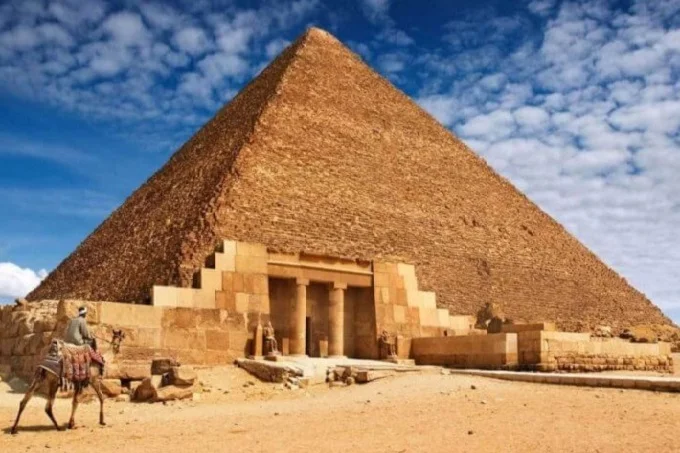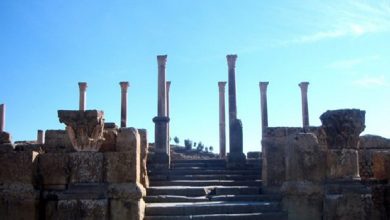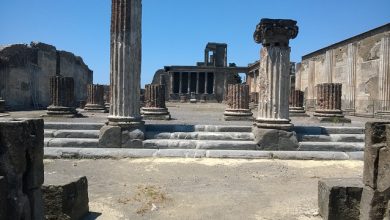Prehistoric civilizations: What ruined them?

The history of humankind is cloaked in mystery since the human race is now so ancient that it has forgotten what it was like in its infancy.
It is often believed that humanity existed in a more barbaric state in the distant past. Still, it has since evolved, emerging from its state of barbarism and becoming more enlightened and competent. However, there is new data that contradicts this theory. It’s possible that humans had highly sophisticated knowledge and technology from the beginning of human history. If this is the case, our contemporary grasp of the distant past severely lacks.
This viewpoint dates back to the beginning of history itself. The ancients often referred to the prosperous past as the golden era. The description of Atlantis that can be found in Plato’s Timaeus is the most convincing evidence of the golden period.
Ignatius Loyola Donnelly, an American politician who served from 1831 until his death in 1901, was a firm believer in the reality of Atlantis and amassed a wealth of knowledge pertaining to this once-thriving, technologically superior civilization.
In 1929, a strange map attributed to Piri Reis and dated 1513 was discovered in Istanbul. On the map, the coastlines of Antarctica and South America were shown with contemporary precision. This map resurrected the idea of sophisticated ancient civilizations and provided a good footing for the notion as a result.
Worlds Before Our Own is a book written by an archaeologist named Brad Steiger that presents fresh evidence of early sophisticated civilizations. Steiger discovered that certain high-tech artifacts were located in the lowest original geological layers whilst primitive objects were found in the higher levels of the original geological formations.
They were, in his words, “irrelevant artifacts,” he said. His book had an influence on a number of subsequent publications that questioned the conventional wisdom about the history of mankind.
What caused the collapse of sophisticated ancient civilizations, assuming they had existed? There are essentially two different outcomes that might have occurred: either these people were so technologically sophisticated that they were able to kill themselves, or they were wiped off by a natural disaster.
The evidence that supports the second choice is more significant than the evidence that supports the first choice. On the other hand, there are certain clues that point to ancient conflicts.
Both creation and destruction are included
“The desert sand in New Mexico melted and changed into a green glass-like substance as a result of the explosion of the first atomic weapon there. In the ancient Euphrates Valley excavation, archaeologists discovered a layer of agricultural society that was 8,000 years old, followed by an even older layer, and then a layer dating back to the caveman age. They have only now reached another stratum, which consists of molten green glass.” (From the 1947 edition of the New York Herald Tribune)
Certain researchers in the scientific community are of the opinion that natural disasters could not have brought down ancient civilizations. They think that the characteristics that can be seen on the surface of the planet now have been developing over the course of millions of years.
The method known as carbon dating cannot be regarded entirely accurate. This technique presupposes that the production of radioactive carbon and its decay into other forms in the atmosphere of the Earth are in a state of stable equilibrium. However, the time it takes for C14 to develop is much more time than the time it takes for it to decay.
Because of this, the percentage of carbon-14 found in the atmosphere (0.0000765 percent) cannot be used as a basis for dating fossils according to scientific standards. That is to say, we are unable to ascertain the age of the fossils that are used as a basis for calculating the age of the Earth’s strata. As a result, the true age of the Earth’s layers remains a mystery to us.
It is a theory that is widely believed that the presence of fossils of trees that grew through distinct geological strata of the Earth is evidence that these geological layers correspond to different eras in human history.
However, it is possible that these layers were created over a relatively short period of time, for instance as a result of rapid sedimentation (the deposition of strata) caused by a natural cataclysm, rather than over millions of years. If this were the case, the appearance of fossilized trees would have been simply impossible.
Myths and stories from many cultures all around the globe talk of a global catastrophe, more specifically a flood. Myths that are very similar may be discovered in places as diverse as Africa, China, North America, Australia, and Sumer—all of which are home to extremely isolated tribes that have never had an opportunity to interact with one another. More than five hundred ancient traditions describe a flood comparable to the accounts found in the Bible and the Koran. These are the remnants of a memory held by people all over the world of an event that took place a very long time ago.
The Dawn of the Modern Skepticism and Scientific Movement
“Exceptional claims need extraordinary proof,” as the saying goes. Skepticism, relativism, materialism, obscurantism, scientism, and other such ideologies are flourishing in the postmodern society like never before. Claims of an extraordinary nature are not brought to the notice of the general public not because the evidence does not support them or because there is no foundation for them, but rather because contemporary philosophy and science consider them to be untenable. As a direct result of this, they are considered to be pseudoscience.
What exactly do we know about the planet we live on? We don’t give it much thought; we fool ourselves into thinking that we are familiar with every aspect of it, while in reality, we don’t even know ourselves very well. The lack of evidence does not constitute proof of its absence.
A famous scientist and recipient of the Nobel Prize named Dr Melvin Cook came to the conclusion that subsurface oil reserves were created by the unexpected and quick burial of organic molecules just a few thousand years ago.
It is possible that subsurface oil deposits formerly housed ancient civilizations that were transformed into oil as a result of rapid soil subsidence and increased pressure.
Innovative methods of conceiving
When we talk about proof that can be seen and touched, we should highlight a structure that dates back to ancient times and was the highest building on the planet up until 1931, when the first skyscraper was constructed. It is still, to this day, the most enormous building that can be found anywhere on the Earth.
The magnificent pyramid of Cheops speaks much more clearly than the doubters who are muttering. It has been determined that it is situated in the geographic center of all of the continents that make up our planet. This kind of accuracy requires an in-depth understanding of the Earth’s topography, such as that provided by Mercator projections, which is quite uncharacteristic of Ancient Egypt.
Despite the advances that have been made in technology, architects, engineers, and scientists have come to the conclusion that it is physically impossible to construct a pyramid of this scale and with such remarkable precision.
According to engineer Markus Schulte’s calculations, the Great Pyramid’s construction would have set them back almost $35 billion.
It should come as no surprise that nobody in this day and age would put that amount of money on a massive facility that would never be livable and on which there would be no return. When this is the case, the issue of “why was it built?” takes precedence over the inquiry of “how was it built?”




